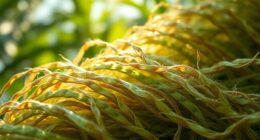Invasive species threaten ecosystems and economies by outcompeting native plants and animals for resources. They disrupt food chains and reduce biodiversity, leading to financial losses in agriculture and tourism. To combat this issue, educate yourself about these species, support regulations on harmful imports, and participate in local monitoring efforts. You can also use technology to report sightings. By taking action together, communities can effectively manage these threats—discover more about specific strategies and techniques to help.
Key Takeaways
- Invasive species disrupt ecosystems by outcompeting native species for resources, leading to reduced biodiversity and altered habitats.
- Economic impacts include lower agricultural and fishery yields, increased control costs, and declines in tourism revenue.
- Public education and awareness are crucial for preventing the spread of invasive species and recognizing their impacts.
- Early detection strategies, such as routine inspections and technology use, help manage invasives before they establish.
- Management techniques include mechanical removal, targeted herbicide use, biological controls, and restoring native habitats for increased ecosystem resilience.
Understanding Invasive Species: Definition and Impact

Invasive species are like uninvited guests that disrupt ecosystems and threaten native plants and animals. When these species enter a new environment, they often outcompete local flora and fauna for resources like food and habitat.
This can lead to a decline in native populations, altering the balance of the ecosystem. You may notice changes in your surroundings, such as a drop in biodiversity or the dominance of certain aggressive species.
It's crucial to understand how invasive species spread, whether through human activities or natural means, as this awareness can help you recognize their impact.
Common Types of Invasive Species
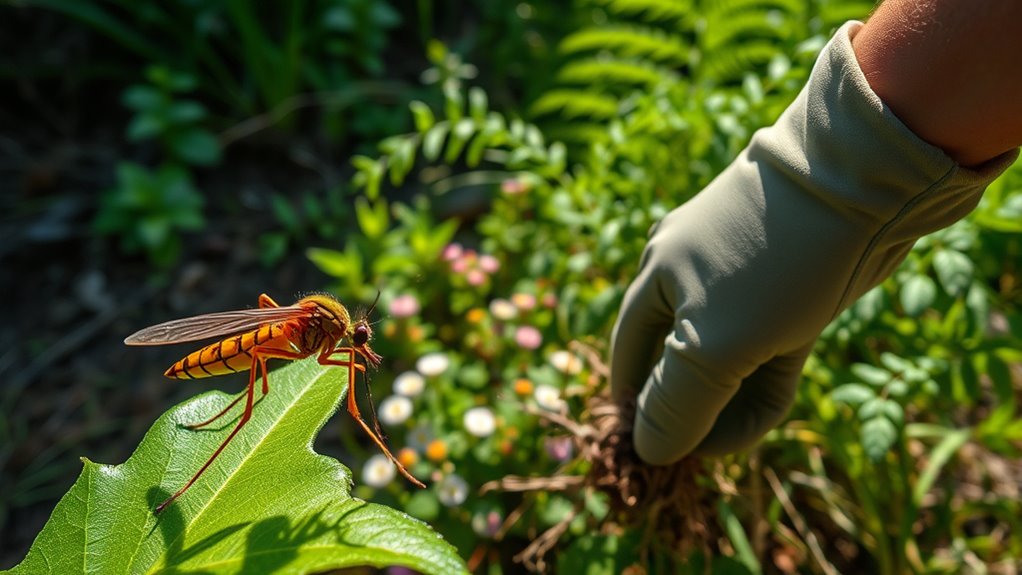
Many common types of invasive species threaten ecosystems around the world. You might encounter plants like Japanese knotweed, which can choke out native vegetation, or purple loosestrife, known for crowding wetlands.
Invasive species like Japanese knotweed and purple loosestrife threaten native plants and disrupt ecosystems worldwide.
Animal invaders include the Burmese python, which disrupts food chains in their new habitats, and the zebra mussel, notorious for clogging waterways and harming local species.
Insects such as the emerald ash borer can devastate entire forests, while the Asian carp is notorious for outcompeting native fish in rivers and lakes.
Each of these species poses unique challenges, altering habitats and threatening biodiversity. Being aware of these invaders helps you recognize their impact and take steps to mitigate their spread in your area.
The Role of Climate Change in Invasive Species Spread
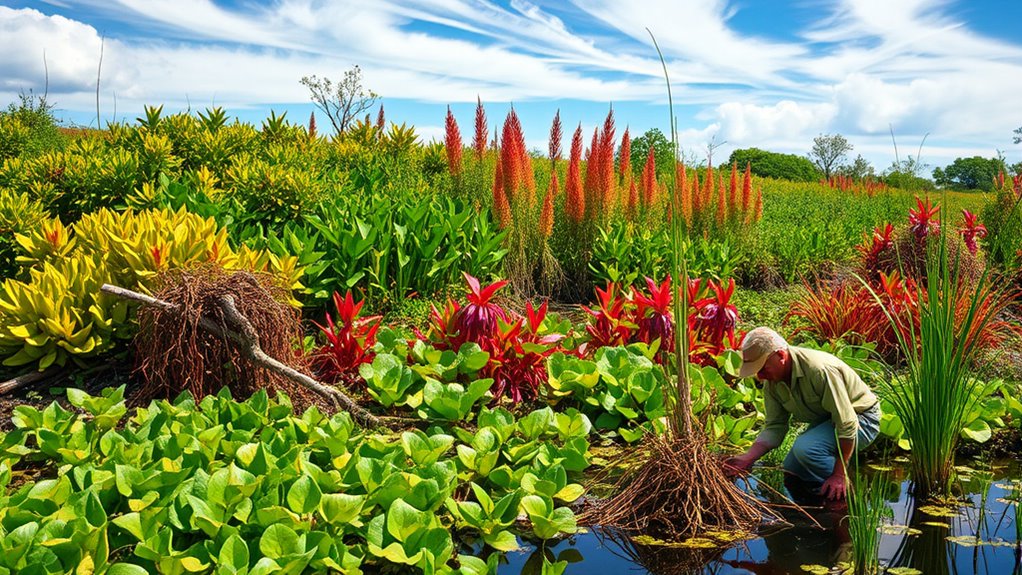
As temperatures rise and weather patterns shift, the spread of invasive species becomes even more pronounced.
You're likely to notice these species expanding their range into new territories, taking advantage of warmer climates and altered ecosystems. Increased temperatures can disrupt native species, giving invasives a competitive edge as they thrive in conditions that may be unfavorable for locals.
Changes in precipitation patterns can further stress native species, making them more vulnerable to invasions. Moreover, climate change can promote the spread of pathogens and pests, exacerbating the problem.
Economic Consequences of Invasive Species
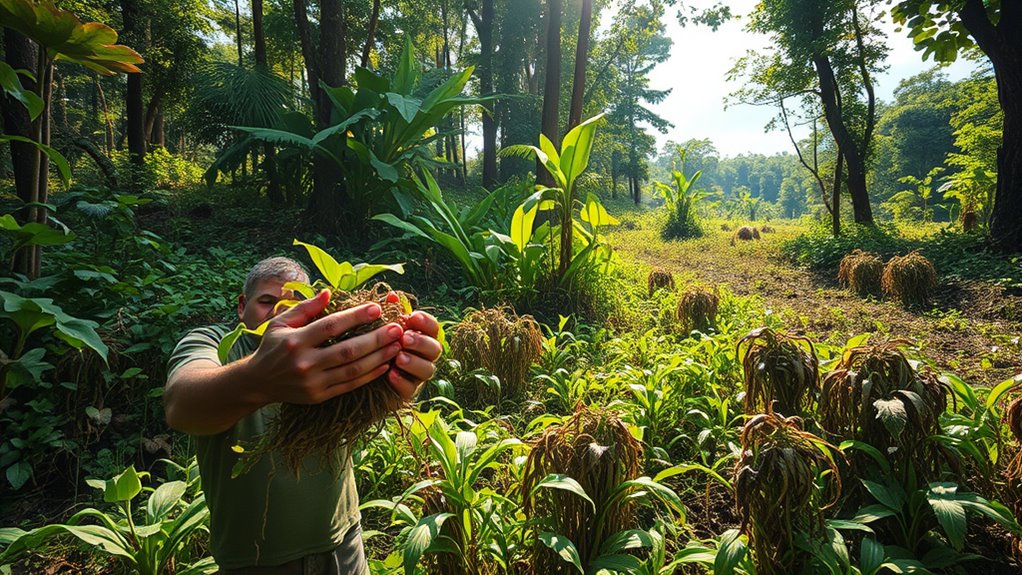
Rising temperatures and shifting ecosystems not only threaten biodiversity but also have significant economic implications.
Invasive species can disrupt local industries, particularly in agriculture, fisheries, and tourism. When these species invade, they often outcompete native crops and fish, leading to lower yields and financial losses for farmers and fishermen. You might also see increased costs for controlling these pests and restoring affected ecosystems.
Furthermore, the tourism sector can suffer as natural attractions become less appealing due to invasives. This results in decreased visitor numbers and revenue.
The Ecological Effects of Invasive Species on Biodiversity

Invasive species pose a significant threat to biodiversity, often outcompeting native organisms for resources and altering habitats.
When you look at ecosystems, these invaders can disrupt food webs, leading to declines in native species populations. They might introduce diseases that native species aren't equipped to handle, further exacerbating their decline.
You may notice that invasive plants crowd out local flora, reducing habitat quality for various animals. This imbalance can trigger a domino effect, where the loss of one species impacts others reliant on it.
Ultimately, the unique characteristics of ecosystems are at risk, diminishing their resilience. By understanding these ecological effects, you can appreciate the urgency of addressing invasive species and the importance of maintaining biodiversity in our natural world.
Strategies for Prevention and Early Detection

Addressing the ecological effects of invasive species highlights the need for effective strategies to prevent their introduction and ensure early detection. One key approach is educating the public about the risks associated with invasive species. By raising awareness, you can empower communities to identify and report suspicious species.
It's also vital to enforce regulations on the importation of potentially harmful organisms, ensuring strict monitoring at borders. Implementing routine inspections in natural areas can help catch invasive species before they establish.
Utilizing technology, like mobile apps for tracking sightings, enhances early detection efforts. Collaborating with local organizations and volunteers can strengthen your monitoring initiatives.
Together, these strategies create a proactive framework to safeguard ecosystems and maintain biodiversity.
Management Techniques for Controlling Invasive Species
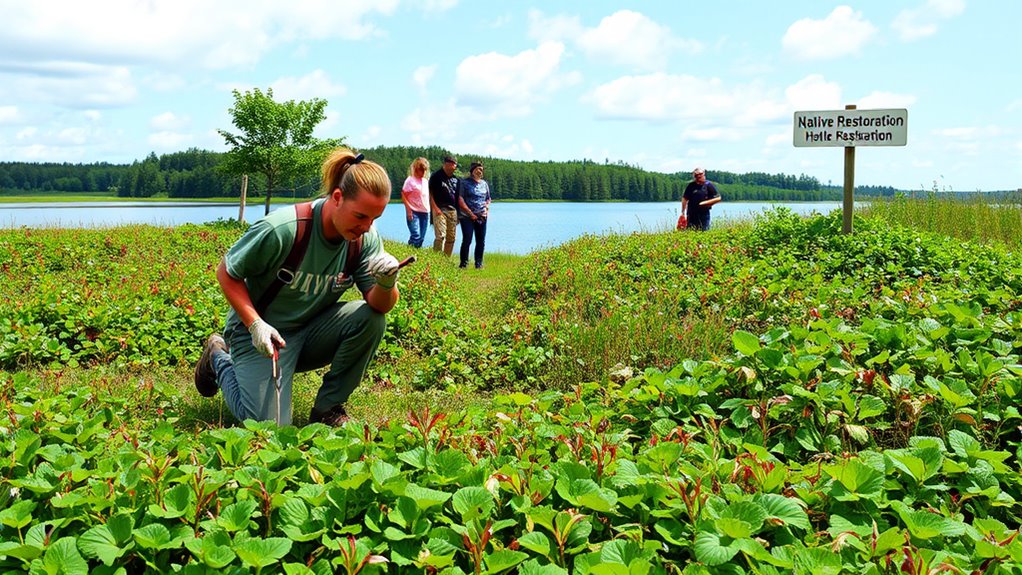
While managing invasive species can be challenging, effective techniques can significantly mitigate their impact on native ecosystems.
One approach is mechanical removal, where you physically pull or cut invasive plants. Herbicides can also help, but be cautious to apply them judiciously to avoid harming native species.
Mechanical removal of invasive plants, along with careful herbicide use, can effectively protect native species.
Introducing biological control agents, such as specific insects or pathogens, may reduce invasive populations without chemical use. You should also monitor ecosystems regularly to catch invasions early.
Creating barriers, like fences or specific planting zones, can prevent spread. Finally, restoring native habitats strengthens ecosystem resilience, making it harder for invasives to take hold.
Community Engagement and Public Awareness Initiatives

How can communities come together to combat the spread of invasive species? One effective way is through public awareness campaigns. You can organize workshops and events to educate residents about the impacts of invasive species on local ecosystems.
Partnering with schools and local organizations can amplify your message. Creating informational materials, such as brochures and social media posts, helps reach a wider audience.
Engaging volunteers for clean-up days can foster a sense of community while directly removing invasive plants. Hosting community discussions allows residents to share experiences and strategies.
Consider forming a local task force dedicated to monitoring and managing invasive species. When you actively involve the community, you not only raise awareness but also empower individuals to take action for a healthier environment.
How Individuals Can Make a Difference

You can make a significant impact on the fight against invasive species by taking simple yet effective actions in your daily life.
Start by educating yourself about local invasive species and their effects on ecosystems. When gardening, choose native plants that support local wildlife and avoid planting invasive species.
Educate yourself on local invasive species and opt for native plants to support wildlife and ecosystems.
If you're hiking or visiting natural areas, clean your shoes and gear to prevent the spread of seeds. Report any sightings of invasive species to local authorities to help them take action.
Additionally, participate in local cleanup events to maintain natural habitats.
Finally, spread awareness among friends and family about the importance of protecting native ecosystems.
Every small effort counts, and together, we can create a healthier environment for everyone.
Frequently Asked Questions
How Do Invasive Species Affect Local Economies?
Invasive species can have a significant impact on local economies. They often disrupt ecosystems, leading to declines in native species that support local fisheries and tourism.
You might notice increased costs for farmers as they struggle to manage these pests, which can reduce crop yields. Additionally, local governments may spend more on control measures, diverting funds from community services.
Can Invasive Species Ever Be Beneficial?
You might be surprised to learn that invasive species can sometimes bring unexpected benefits. They can enhance biodiversity in certain situations, create new habitats, or even provide resources like food and materials.
Some invasive plants can improve soil quality or help stabilize ecosystems. However, it's essential to evaluate these benefits carefully, as they often come with significant ecological costs.
Balancing the pros and cons is crucial when considering their impact on the environment.
What Role Do Pets Play in Spreading Invasives?
Pets can unintentionally spread invasive species in various ways.
When you take your dog for a walk, it might pick up seeds from invasive plants that cling to its fur.
Similarly, your cat could bring home small animals that are non-native and harmful to local ecosystems.
Even fish from aquariums can escape or be released into the wild, leading to potential invasions.
It's crucial to be mindful of your pets' movements and behaviors.
How Can I Identify Invasive Species in My Area?
Identifying invasive species in your area is like spotting a wolf in sheep's clothing.
Start by researching local plants and animals, focusing on characteristics that differentiate natives from invaders. Use apps or field guides to help with identification.
Also, check local extension services or conservation groups for resources. Take note of unusual growth patterns or behaviors in wildlife.
If something seems off, it might just be an invasive species trying to sneak in.
What Legal Measures Exist to Combat Invasive Species?
To combat invasive species, there are several legal measures you can explore.
Local and state governments often have regulations that prohibit the sale, transport, or introduction of certain invasive species.
You might also find that some areas implement control programs or require permits for activities that could spread these species.
Conclusion
Invasive species may seem like a distant threat, but they creep into our gardens and waterways, disrupting the delicate balance of nature. By staying informed and taking action, you can be a guardian of your local ecosystem. Picture yourself planting native flowers or joining a community cleanup, helping to restore the vibrant tapestry of life around you. Together, we can protect our planet, ensuring that the chorus of chirping birds and rustling leaves continues for generations to come.






